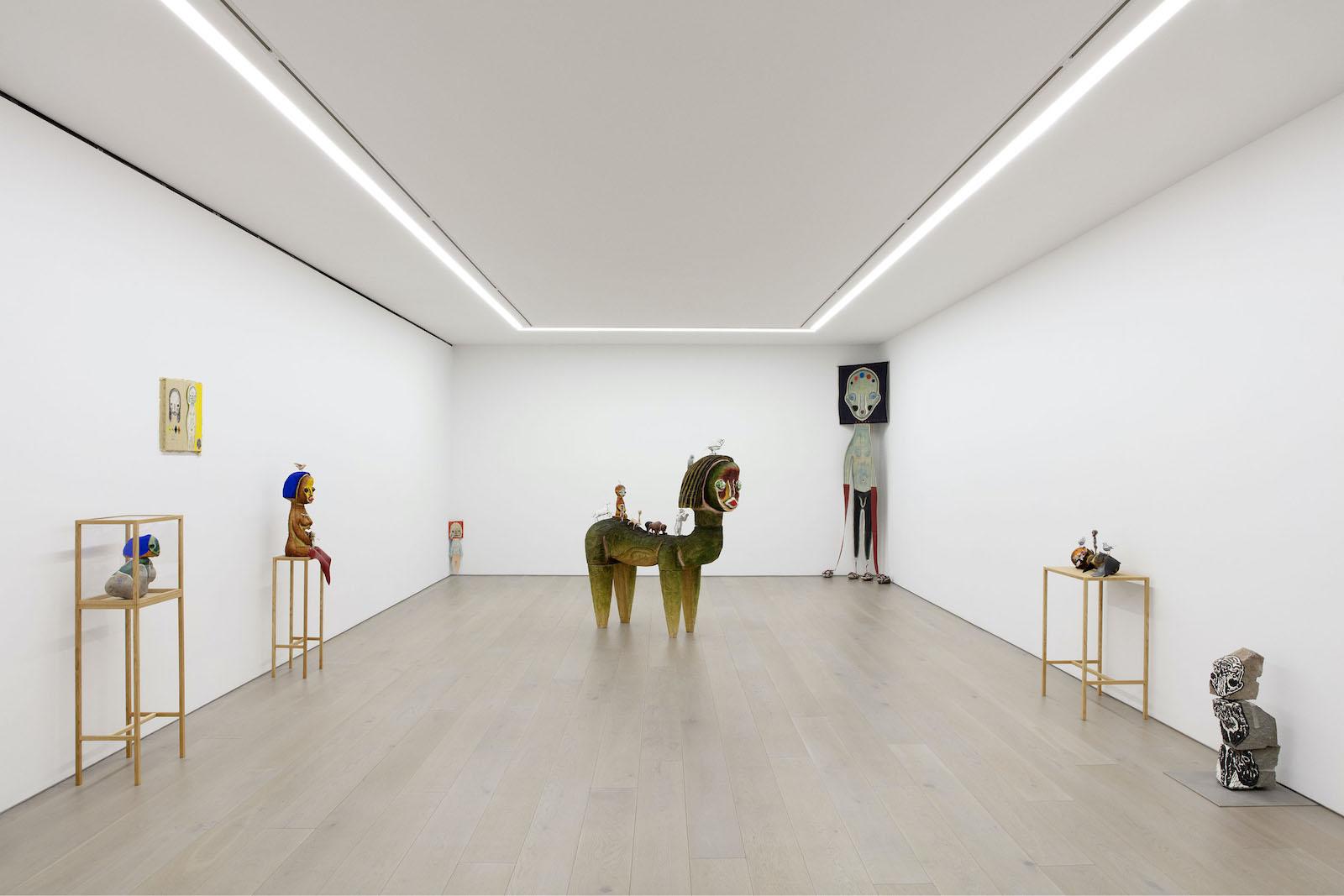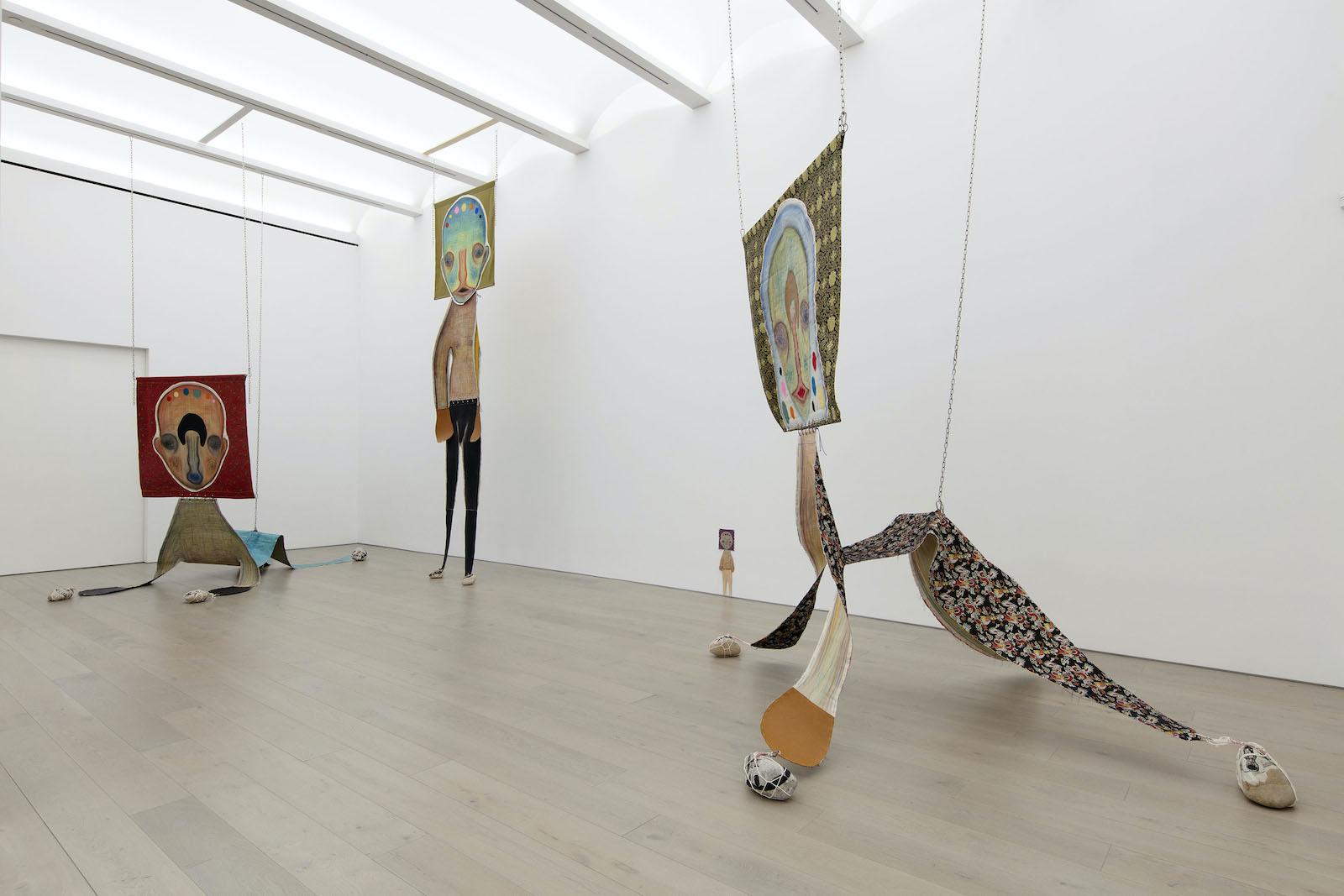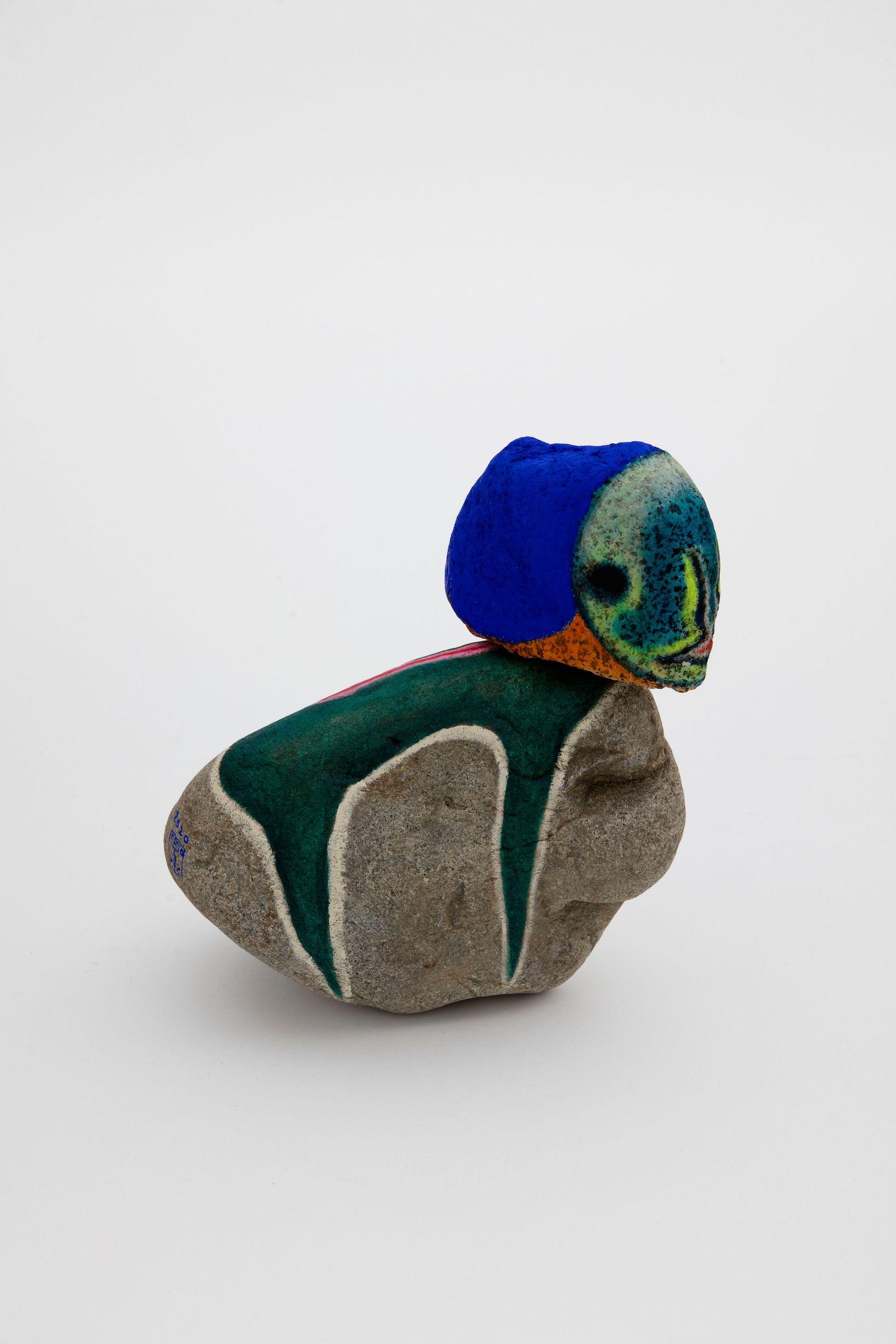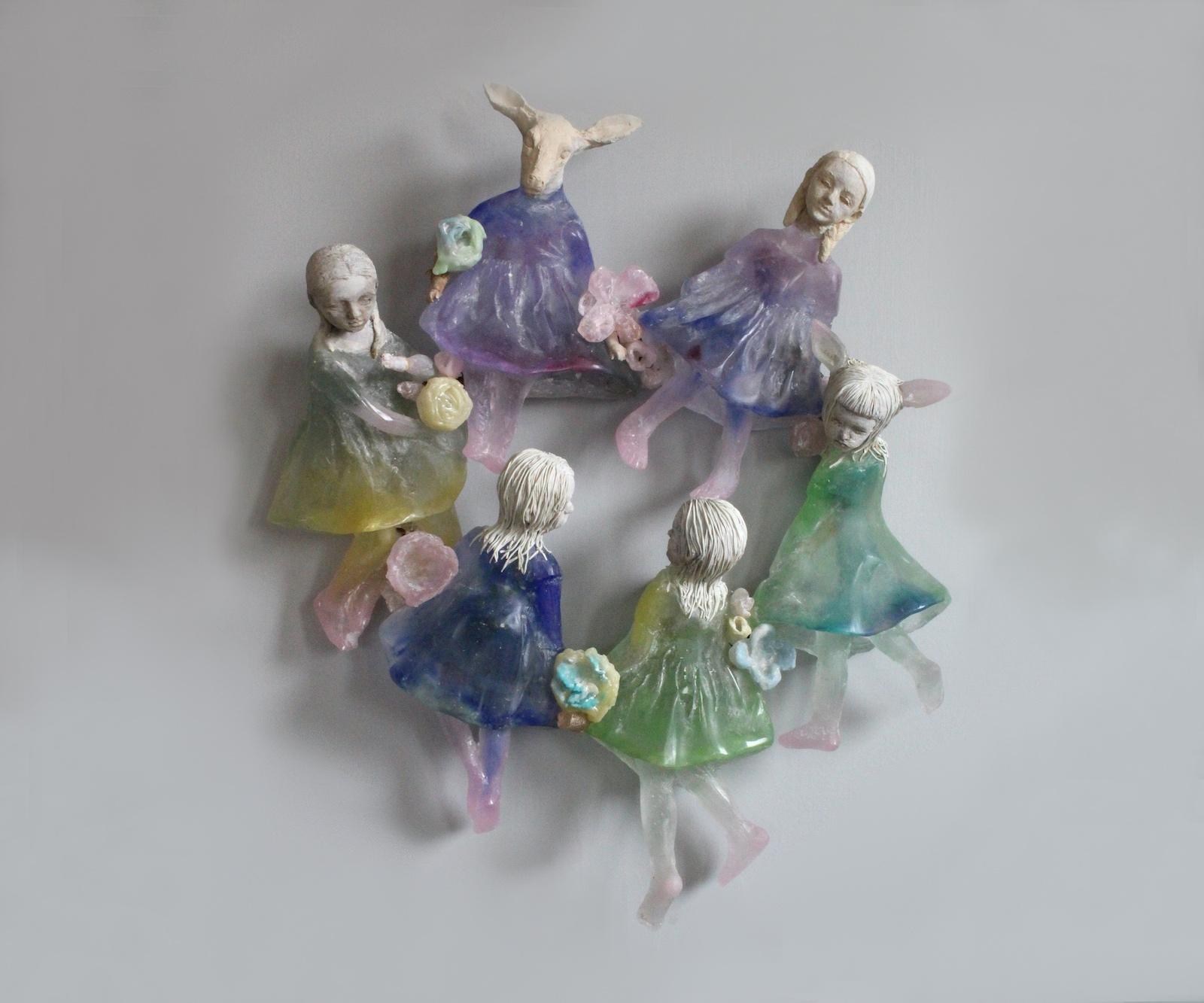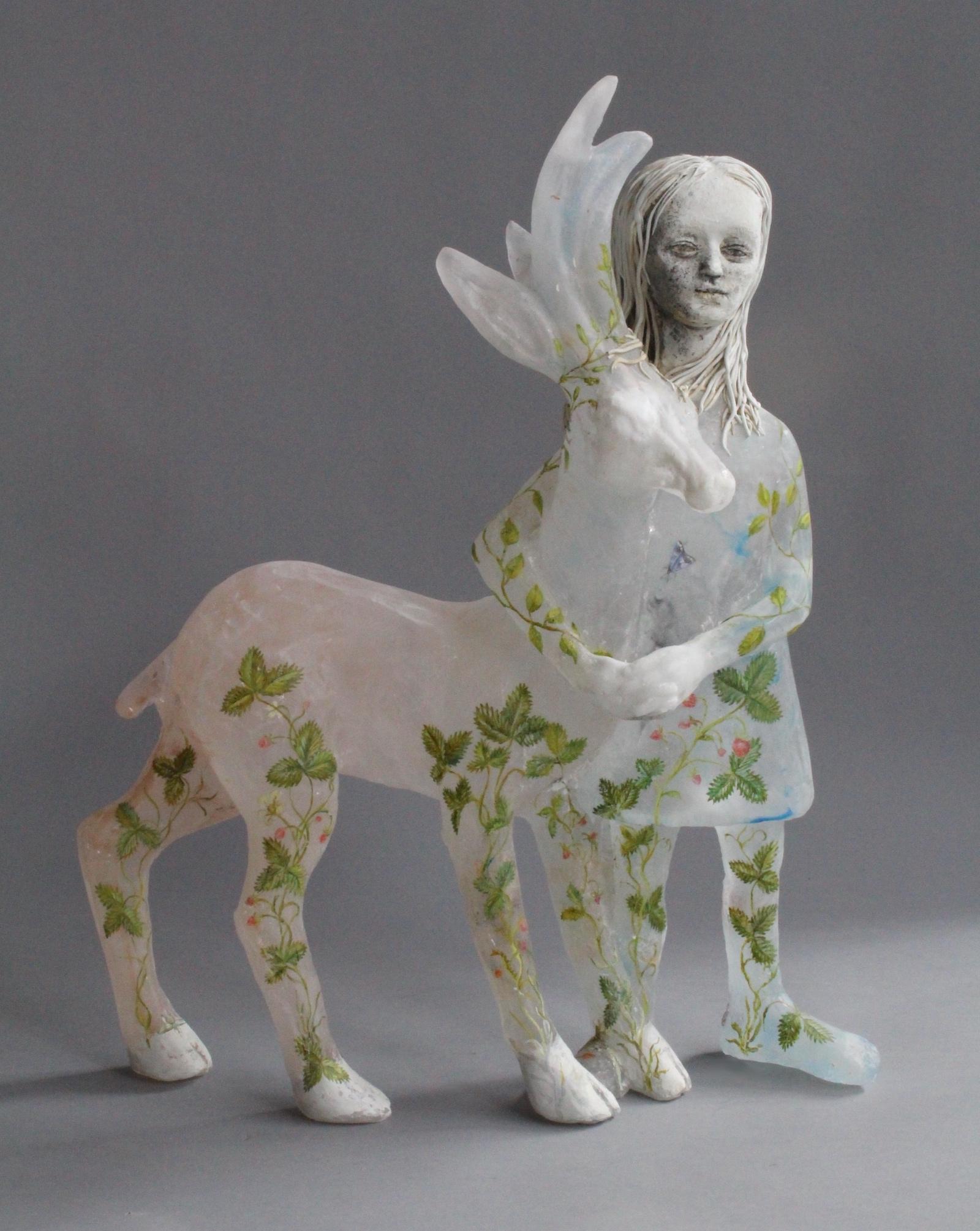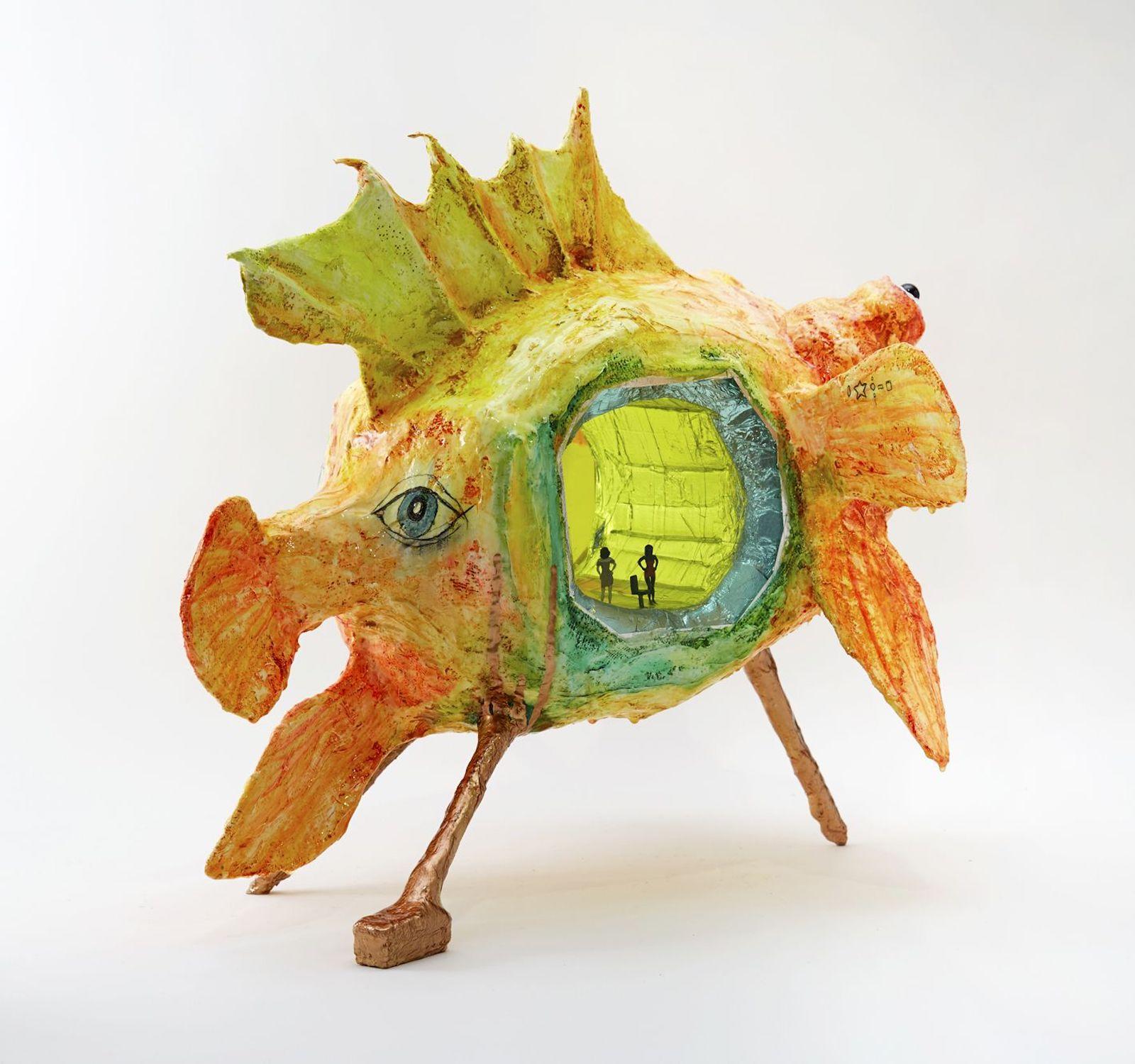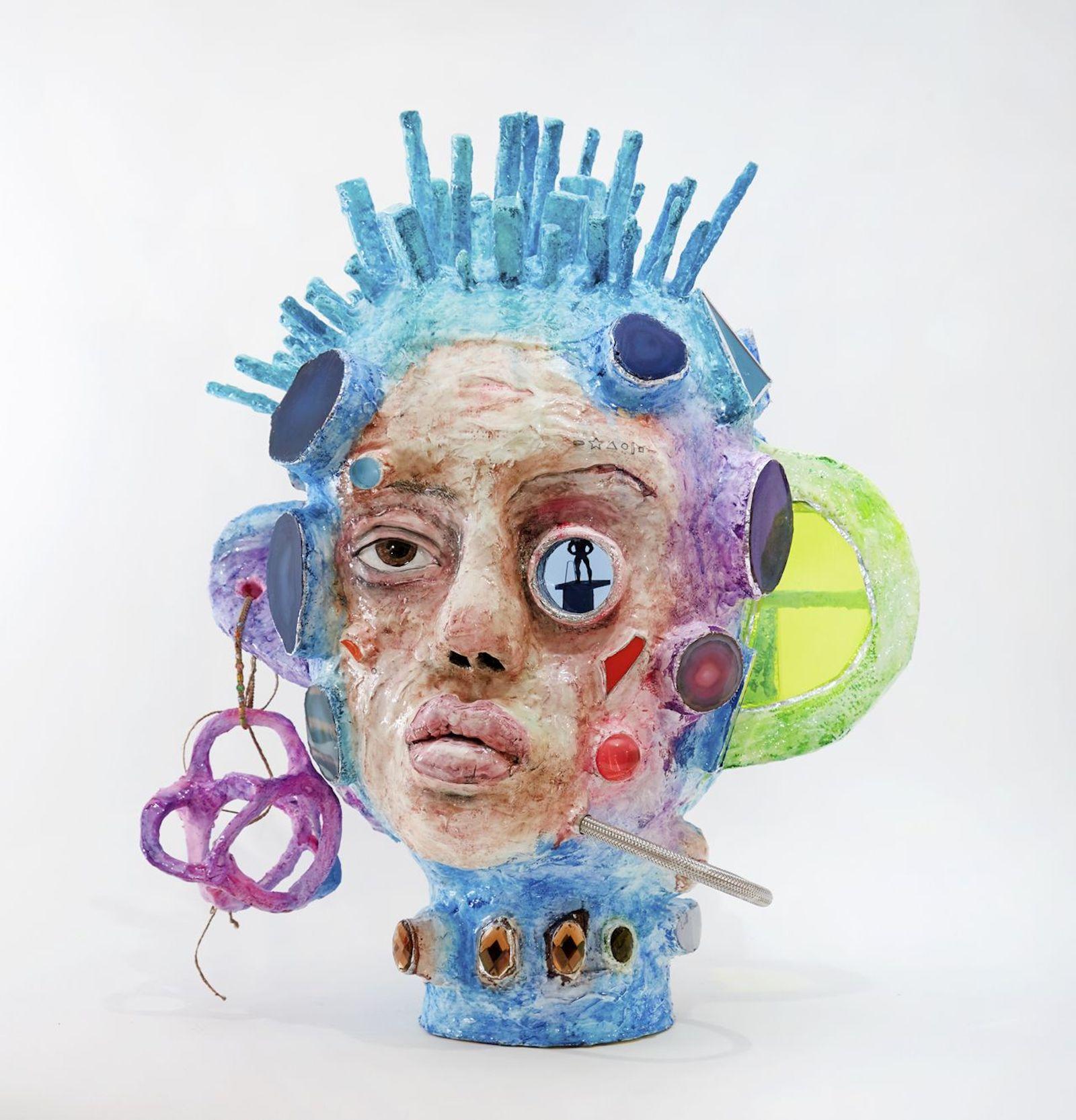Since that time, Kato has continued to experiment with ways of representing the human body, while drawing upon the mythologies of his birthplace and a fascination with outsider and primitive art, as well as his own vivid imagination. Returning to America for his second solo show with Perrotin New York (his eighth one-person exhibition with the gallery worldwide), the artist is presenting a lively selection of mixed-media sculptures, installations, and paintings (most of the works are untitled and made in 2019 or 2020), which take over two floors of the striking Lower East Side gallery.
Several diptychs depict charismatic creatures painted with the artist’s hands rather than with traditional brushes. Looking like aliens or creatures from cave paintings, Kato’s anthropomorphic figures combine disembodied parts. Some resemble people with snail-like tails and others evoke adult embryos. Painted directly with his fingers on toothy cotton duck, raw linen, and pieces of found fabrics that are fastened together with threads, grommets, and string, Kato’s fantastic figures convey a sense of otherworldliness, but not one that’s too distant from Western artists like Bacon and Van Gogh, whom he greatly admires.





